We take a lot of things for granted. For example, it’s said that an adult takes roughly 20,000 breaths per day. I must admit that I seldom think about this, even though breathing air with at least 20% oxygen is crucial to life. Without it, we would die after only a few moments.
In a similar way, humans need water in order to live. Whether mixed with other fluids or on its own, it’s generally said that we can’t survive for more than a few days without adequate water intake. Having lived and travelled for years in areas where safe drinking-water is not as available as it generally is in the United States, I’ve thought a lot more about water than I have air. This is the reason I’ve had some type of water filter close at hand for more than three decades.
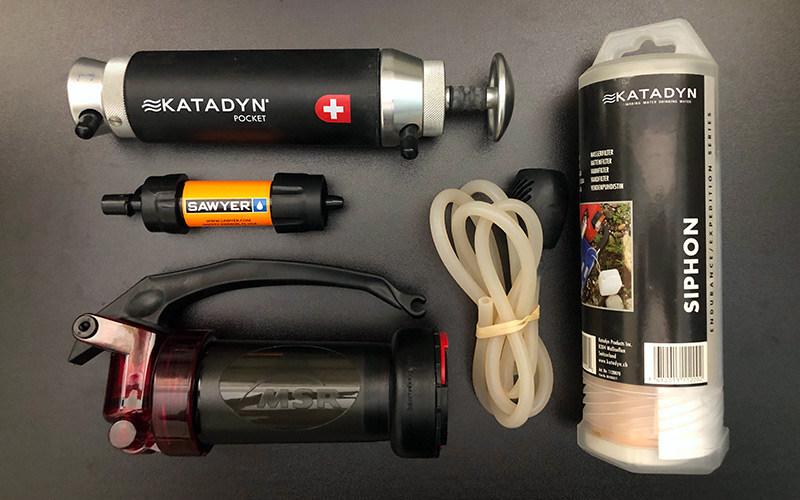
The image above shows the various portable water filters I’ve carried or to which I’ve otherwise had access over the years. Back in 1986 I started out with an older version of the Katadyn Pocket filter shown top-left in the image above. I’m not sure who named this. The model shown above weighs in at a hefty 21.5 ounces (597 grams). By comparison, the MSR filter weighs 13.3 ounces (378 grams), and my Sawyer Mini only 1.4 ounces (39 grams). Naming protocols aside, I’ve depended on Katadyn filters for years. This Katadyn Pocket filter is a solid piece of work, and it’s suitable for the most extreme conditions you can imagine.
It’s always a comfort to know that you have a quality portable water filter available when you need it. I currently carry a Sawyer Mini in my Loadout Level 02 (Go Bag) and in my Loadout Level 3B (Vehicle Bag). I carry the MSR filter in my Loadout Level 3A (Portable Survival). Finally, the Katadyn pocket filter and the unit shown in the image at the top of this page make up part of my Loadout Level 04 (Residence Survival) setup.
Portable water filters are great. However, anyone who’s ever used one for more than a few days to supply their only source of drinking water can tell you that using one gets old very quickly. There’s a lot of pumping or pushing involved, and depending on the unit it can take a good deal of effort. For the record, I tested the LifeStraw in 2016, and the GRAYL Bottle in 2018. I know that many love these, yet they were not for me. Let us know in the Comment section below if these have worked well for you in real-world scenarios.
If you find yourself in a situation in which safe drinking water is not available for more than a few days or weeks, you’ll likely wish you had more than a portable water filter. This brings us to the subject of this article. We had various setups while living long-term overseas, and some worked better than others. If I had to choose an option for overseas today, I’d choose the Katadyn Drip Filter Ceradyn that we recently purchased and tested for home emergency use.
We generally don’t recommend gear that we’ve not tested long-term in hard use. I feel comfortable recommending this unit, however, because we’ve used Katadyn filters for years. In fact, this unit is nothing more than two plastic containers set up to allow gravity to feed unsafe or questionable water from the top container through three Katadyn filters into the bottom container. If you saw it in person you’d probably think it was cheaply built. Katadyn did not put a lot of effort into making this look fancy or appealing. It’s simply a utilitarian unit that depends on the quality of the Katadyn filters to do it’s job. And that’s where the magic happens.
Like me, many others have trusted Swiss-made Katadyn products for decades. In fact, we used the Katadyn Siphon filter shown with the portable units in the image above overseas. If I recall correctly we had a large cooking pot placed on a high counter with the filter submerged in it. The hose then fed the siphoned, filtered water to another large cooking pot below. Again, it wasn’t pretty, but it did the job.
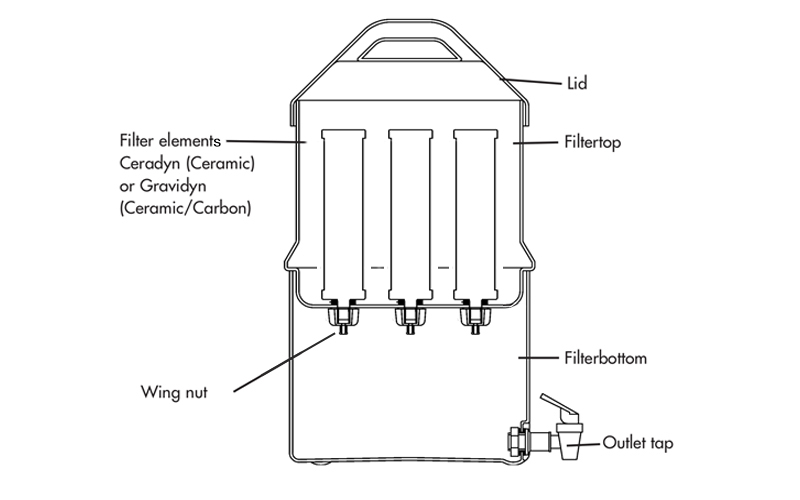
The Katadyn Drip Filter shown above is a similar setup, yet it uses gravity alone rather than a siphon method to move the water from one container to another. This is not a quick process. For our testing we filled the top container with 2.5 gallons of water. This brought the level to the top of the filters. It took 2 hours and 15 minutes to filter one gallon of water. Since there’s less water pressing against the vertical filters as the upper container drains, the flow rate slows down after a gallon. It can take another 6-8 hours to almost empty the upper container.
For use of a system like this, we recommend filling it each evening. In the morning you’ll have just over two gallons of filtered water to drink. If more is needed during the day, simply refill the upper container every time a gallon is filtered and removed. In this way you should be able to filter four gallons in 9 hours. Unless filtered water is needed immediately, this saves a good deal of effort over using portable filters.
This setup would make a big difference in a longer-term situation such as a grid-down scenario. Note that the first time you use the unit, or after it has dried out completely in storage, the flow rate will be slower than mentioned above. Once it’s wet, you should get the same flow rate as in our testing.
This unit is not inexpensive. It costs about $300.00. Again, most of the money is in the filters. The unit also includes a cleaning kit and a measuring gauge to test any reduction in the size of the ceramic filters after many uses and cleanings. Each filter costs about $60 to $70 to replace, which would mean $200 or more for this three-filter unit.
You can choose either Katadyn Ceradyn or Gravidyn ceramic filters for use in these units. The Ceradyn filter cores have silver-coated pebbles that inhibit microbial growth. These are rated for 13,000 gallons, yet some people likely use them for much more. The Gravidyn filter cores are filled with activated carbon, which helps with the taste of water. They are only rated for six months of use. I prefer the Ceradyn filters for the longer service life.
Here is a picture of three Ceradyn filters installed in our unit.
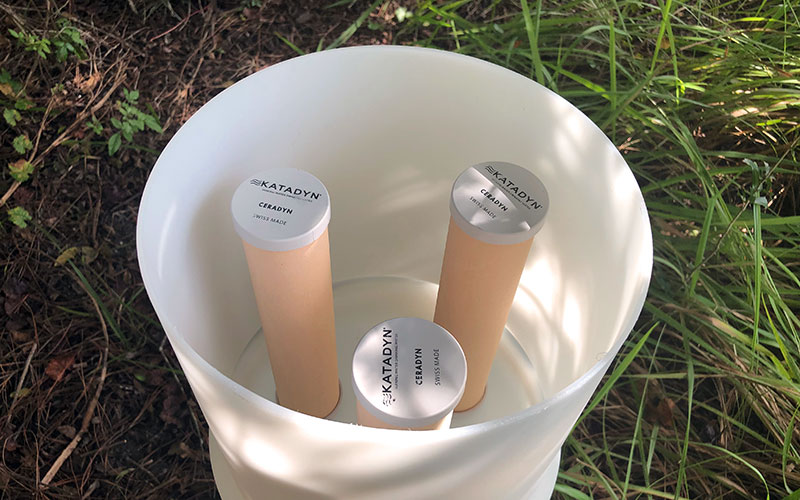
If your using water that has a lot of sediment or debris, such as water from a pond, you’ll want to pre-filter it so that it won’t create sludge that needs to be cleaned off your expensive Katadyn filters. For pre-filtering we’ve bought inexpensive paint filters as shown below.
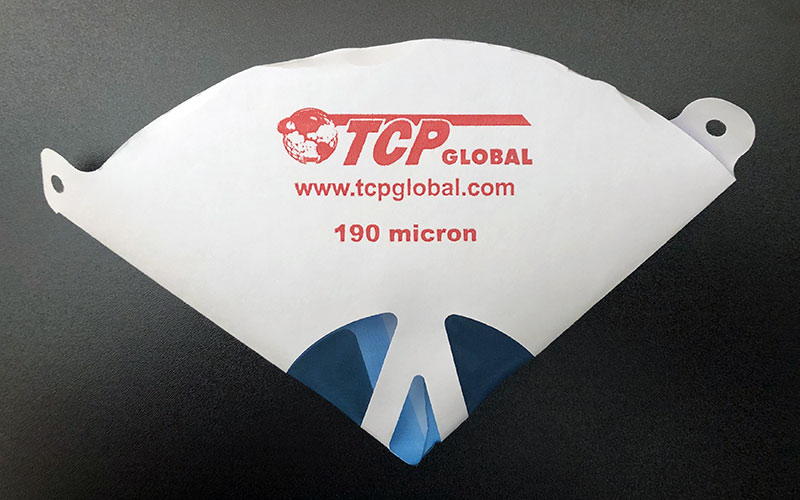
As with any other gear, we recommend that you undertake careful research before placing anything into your loadout levels. For example, visit the Katadyn website to understand how these filters work, and exactly what they filter out of water. We also recommend that you research the difference between water filtration and water purification.
The bottom line is that if you’re in the market for a system that can filter a higher volume of water than a basic portable unit, and that does not use electricity or depend on water pressure, we recommend that you take a look at the Katadyn Drip Filter Ceradyn. We’ve found it to be a great addition to our Loadout Level 04 setup.
As always, remember that Panoplia.org has no affiliate relationships with manufacturers or retail suppliers, nor do we participate in third-party advertising. We simply share our views about gear and supplies that work well for us under hard use.

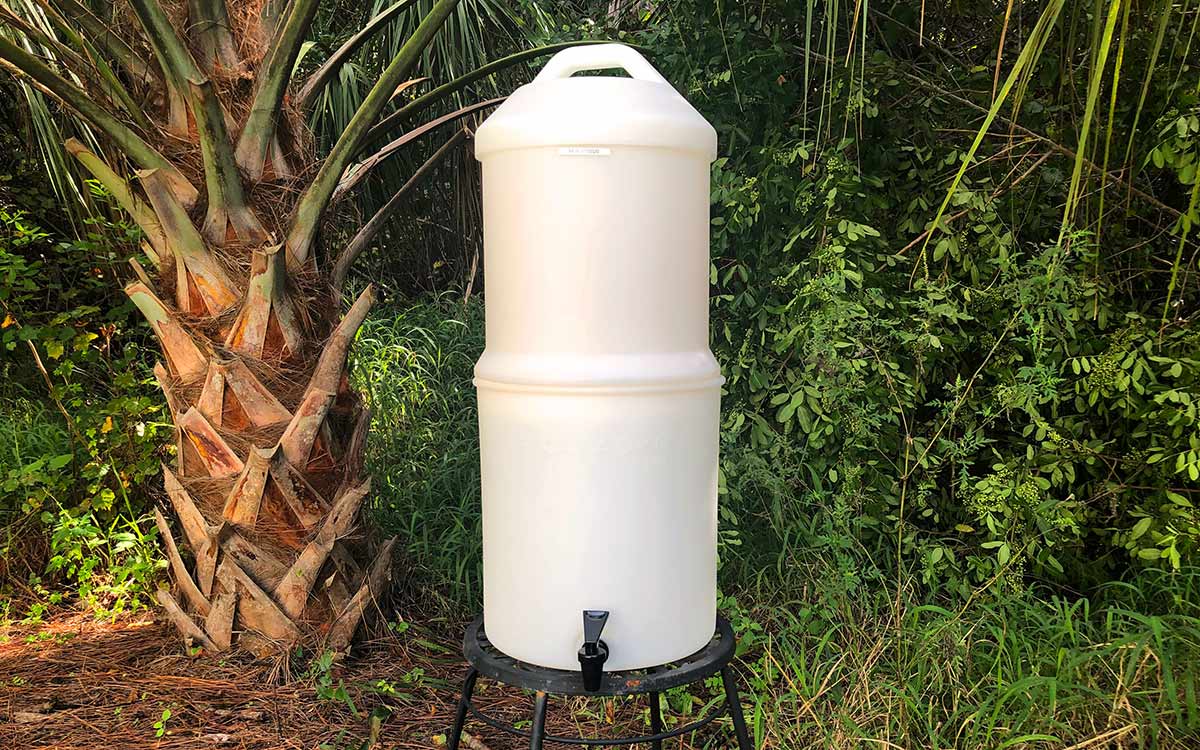


0 Comments